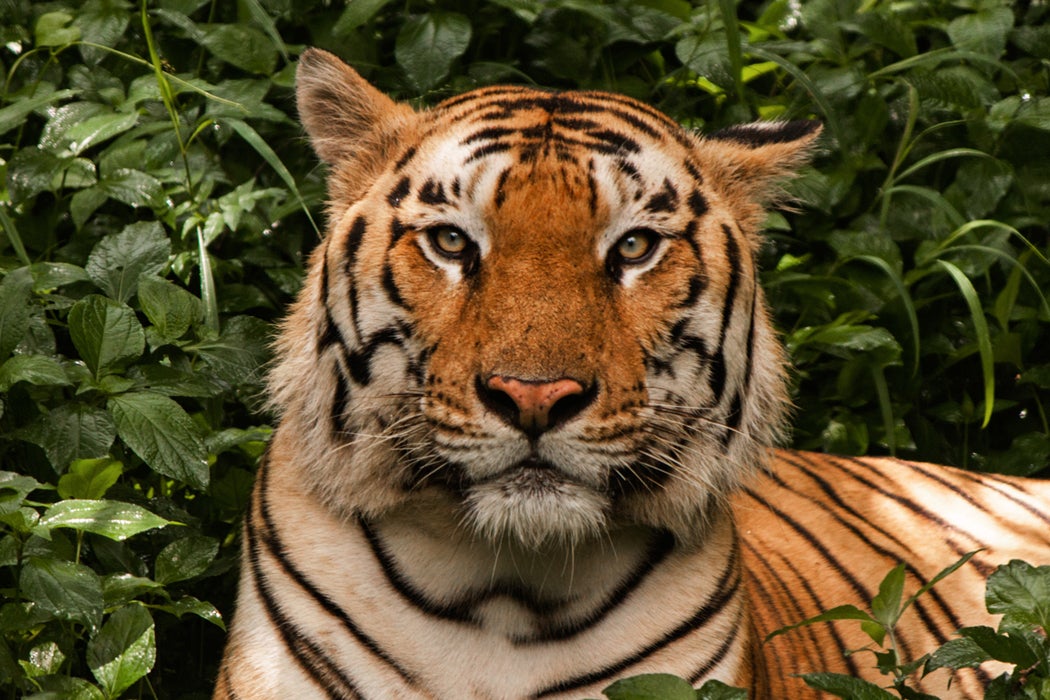How do you catch a tiger? Authorities in India are facing this problem as they try to capture a wild tiger suspected of killing multiple people. Given the cats’ camouflage abilities, it’s easier to lure the tiger into a trap than to track it down. And when it comes to baiting that trap, authorities are turning to something you might not expect: perfume.
Capturing large cats is not a problem encountered only by public safety authorities. Researchers interested in the movements of these secretive cats also need ways to track them. Ivan Castro-Arellano, Carmina Madrid-Luna, Thomas E. Lacher, Jr., and Livia León-Paniagua, writing in The Journal of Wildlife Management, describe the use of inexpensive, relatively low-effort hair snags to track secretive carnivores in Mexico. The traps consist of perfumed carpet with roofing nails or Velcro attached to snag some of the animal’s hair. The fragrances are supposed to entice the cats to rub against the trap, shedding hair. In a blind test, each trap was sprayed with either catnip oil, commercial carnivore attractants such as Carman’s Raccoon Lure Number 1, or a generic equivalent of Calvin Klein’s Obsession for Men cologne.
Turns out, Obsession for Men worked at least as well as catnip and the commercial attractants. Some species, particularly ocelots, were only attracted to the artificial scents and never the catnip traps.
Get Our Newsletter
There’s a good explanation for why Obsession for Men is at least as effective as catnip. Writing in Economic Botany, Arthur O. Tucker and Sharon S. Tucker conducted an exhaustive chemical analysis of catnip and discovered that one key ingredient is beta-phenylethyl alcohol. Beta phenylethyl alcohol seems to stimulate salivation in cats, and along with other catnip ingredients may also act as a hallucinogen. (So, yes, your cat might be tripping on catnip.) Beta phenylethyl alcohol is also a common ingredient in many perfumes.
But in some cases, perfume seems even more effective than catnip, so there must be other perfume ingredients that attract certain cats. Like Castro-Arellano, Indian authorities are using Obsession to catch their problem tiger. Obsession in particular contains a substance similar to civet musk, and perhaps that will make the difference. Only time, and tigers, can tell.







